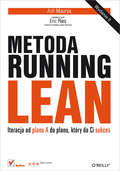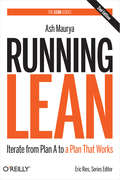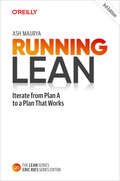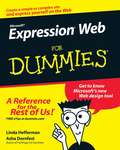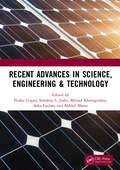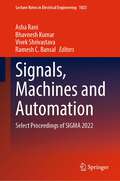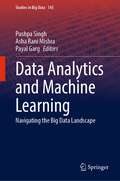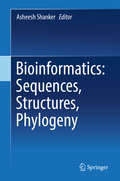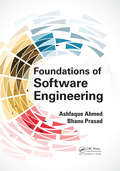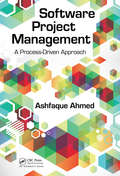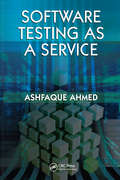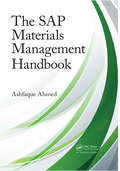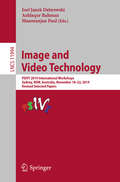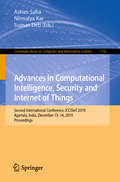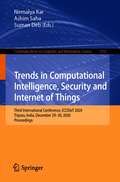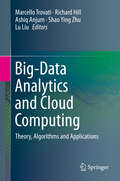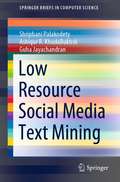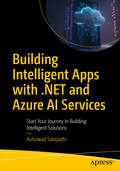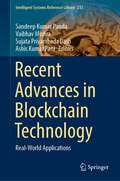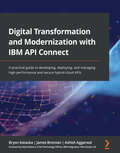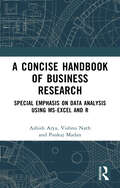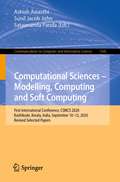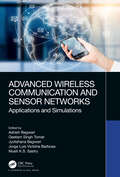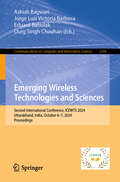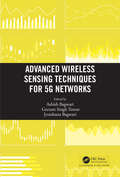- Table View
- List View
Metoda Running Lean. Iteracja od planu A do planu, który da Ci sukces. Wydanie II
by Ash MauryaTo jedna z najlepszych technicznych ksi??ek na temat modelu Lean Startup. I tyle. Nic wi?cej nie trzeba dodawa?.Dan Martell, za?o?yciel, Clarity.fm, anio? biznesu Wizja testowana w praktyceWitamy w ?wiecie najnowocze?niejszych praktyk biznesowych i niezmierzonych mo?liwo?ci w dziedzinie innowacji. ?yjemy w dobie Internetu, chmur obliczeniowych i oprogramowania open source, dzi?ki czemu koszty budowania nowych produktów osi?gn??y rekordowo niski poziom. A jednak mimo wszystko szanse na to, by za?o?ony przez nas startup odniós? sukces, nie wzros?y. Dlatego w?a?nie powsta? ten podr?cznik. Jest on znakomitym narz?dziem dla szefów firm, dyrektorów generalnych, w?a?cicieli ma?ych przedsi?biorstw, deweloperów i programistów oraz ka?dego zainteresowanego stworzeniem firmy, która nie tylko przetrwa, ale b?dzie mia?a szanse liczy? si? na rynku.Running Lean to lepsza i szybsza metoda testowania pomys?ów na nowe produkty oraz opracowywania produktów, które odnios? sukces. Dzi?ki niej nauczysz si?:znajdowa? uczestników wczesnego rynku;wybiera? w?a?ciwy moment na pozyskiwanie kapita?u z zewn?trz;testowa? ceny;tworzy? i mierzy? to, czego chc? klienci;maksymalizowa? podejmowane dzia?ania pod k?tem szybko?ci uczenia si? i koncentracji;rozpoznawa? zestawienie produktu i rynku;d??y? w sposób powtarzalny do opracowywania produktów odpowiadaj?cych potrzebom rynku.Przeczytaj równie?: Metoda Lean Startup. Wykorzystaj innowacyjne narz?dzia i stwórz firm?, która zdob?dzie rynek, Eric Ries, Helion 2012.Ash Maurya - za?o?yciel firmy Spark59. Za?o?y? równie? kilka innych startupów, w?ród których znalaz?y si? tak udane przedsi?wzi?cia, jak WiredReach. Dzi?ki prowadzonym przez siebie warsztatom Running Lean blisko wspó?pracuje z wieloma przedsi?biorcami, którym pomaga testowa? i dopracowywa? ich wizj?. Ash pe?ni funkcj? mentora w wielu inkubatorach przedsi?biorczo?ci na ca?ym ?wiecie, w tym w Mozilla Foundation, Year One Labs oraz Capital Factory.
Running Lean: Iterate from Plan A to a Plan That Works
by Ash Maurya<div><p>We live in an age of unparalleled opportunity for innovation. We’re building more products than ever before, but most of them fail—not because we can’t complete what we set out to build, but because we waste time, money, and effort building the wrong product. What we need is a systematic process for quickly vetting product ideas and raising our odds of success. \n</p><p>\n\nIn this inspiring book, Ash Maurya takes you through an exacting strategy for achieving a "product/market fit" for your fledgling venture, based on his own experience in building a wide array of products from high-tech to no-tech. Throughout, he builds on the ideas and concepts of several innovative methodologies, including the Lean Startup, Customer Development, and bootstrapping.</p></div>
Running Lean: Iterate from Plan A to a Plan That Works
by Ash MauryaWe're building more products today than ever before, but most of them fail--not because we can't complete what we want to build but because we waste time, money, and effort building the wrong product. What we need is a systematic process for quickly vetting product ideas and raising our odds of success. That's the promise of Running Lean.In this inspiring book, Ash Maurya takes you through an exacting strategy for achieving product/market fit for your fledgling venture. You'll learn ideas and concepts from several innovative methodologies, including the Lean Startup, business model design, design thinking, and Jobs-to-be-Done. This new edition introduces the continuous innovation framework and follows one entrepreneur's journey from initial vision to a business model that works.Deconstruct your idea using a one-page Lean CanvasStress-test your idea for desirability, viability, and feasibilityDefine key milestones charted on a traction roadmapMaximize your team's efforts for speed, learning, and focusPrioritize the right actions at the right timeLearn how to conduct effective customer interviewsEngage your customers throughout the development cycleContinually test your product with smaller, faster iterationsFind a repeatable and scalable business model
Microsoft Expression Web For Dummies
by Asha Dornfest Linda HeffermanExpression Web is Microsoft's newest tool for creating and maintaining dynamic Web sites. This FrontPage replacement offers all the simple "what-you-see-is-what-you-get" tools for creating a Web site along with some pumped up new features for working with Cascading Style Sheets and other design options. Microsoft Expression Web For Dummies arrives in time for early adopters to get a feel for how to build an attractive Web site. Author Linda Hefferman teams up with longtime FrontPage For Dummies author Asha Dornfest to show the easy way for first-time Web designers, FrontPage vets, or users of other Web design tools how to get results from Expression Web.
Recent Advances in Science, Engineering & Technology: International Conference on Recent Advances in Science, Engineering & Technology
by Nishu Gupta Milind Khanapurkar Asha Gedam Nikhil Bhave Sandeep S. JoshiThe advances in technology, engineering and science are necessary for better and sustailable life. It is not only beneficial for human growth but equally important for all the living and non living matters on the planet. Hence it is imperative to come togather and share the knowledge, innovations and developments in the technology and science happening around. The objective of 1st International Conference on “Recent Advances in Science, Engineering & Technology” (ICRASET-2023) was to provide platform to share various hypotheses, conclusions, and discoveries from students, researchers, professors, and industry experts. The conference was associated with the knowledge partners like ASM International, IEEE, IETE, ISTE, CSI and IE
Signals, Machines and Automation: Select Proceedings of SIGMA 2022 (Lecture Notes in Electrical Engineering #1023)
by Asha Rani Ramesh C. Bansal Bhavnesh Kumar Vivek ShrivastavaThis book constitutes selected peer-reviewed proceedings of the 2nd International Conference on Signals, machines, and Automation (SIGMA 2022). This book includes papers on technologies related to electric power, manufacturing processes & automation, biomedical & healthcare, communication & networking, image processing, and computation intelligence. The book will serve as a valuable reference resource for beginners as well as advanced researchers in the areas of engineering & technology.
Data Analytics and Machine Learning: Navigating the Big Data Landscape (Studies in Big Data #145)
by Pushpa Singh Asha Rani Mishra Payal GargThis book presents an in-depth analysis of successful data-driven initiatives, highlighting how organizations have leveraged data to drive decision-making processes, optimize operations, and achieve remarkable outcomes. Through case studies, readers gain valuable insights and learn practical strategies for implementing data analytics, big data, and machine learning solutions in their own organizations. The book discusses the transformative power of data analytics and big data in various industries and sectors and how machine learning applications have revolutionized exploration by enabling advanced data analysis techniques for mapping, geospatial analysis, and environmental monitoring, enhancing our understanding of the world and its dynamic processes. This book explores how big data explosion, the power of analytics and machine learning revolution can bring new prospects and opportunities in the dynamic and data-rich landscape. It highlights the future research directions in data analytics, big data, and machine learning that explores the emerging trends, challenges, and opportunities in these fields by covering interdisciplinary approaches such as handling and analyzing real-time and streaming data.
Bioinformatics: Sequences, Structures, Phylogeny
by Asheesh ShankerThis book provides a comprehensive overview of the concepts and approaches used for sequence, structure, and phylogenetic analysis. Starting with an introduction to the subject and intellectual property protection for bioinformatics, it guides readers through the latest sequencing technologies, sequence analysis, genomic variations, metagenomics, epigenomics, molecular evolution and phylogenetics, structural bioinformatics, protein folding, structure analysis and validation, drug discovery, reverse vaccinology, machine learning, application of R programming in biological data analysis, and the use of Linux in handling large data files.
Foundations of Software Engineering
by Ashfaque Ahmed Bhanu PrasadThe best way to learn software engineering is by understanding its core and peripheral areas. Foundations of Software Engineering provides in-depth coverage of the areas of software engineering that are essential for becoming proficient in the field. The book devotes a complete chapter to each of the core areas. Several peripheral areas are also explained by assigning a separate chapter to each of them. Rather than using UML or other formal notations, the content in this book is explained in easy-to-understand language. Basic programming knowledge using an object-oriented language is helpful to understand the material in this book. The knowledge gained from this book can be readily used in other relevant courses or in real-world software development environments.This textbook educates students in software engineering principles. It covers almost all facets of software engineering, including requirement engineering, system specifications, system modeling, system architecture, system implementation, and system testing. Emphasizing practical issues, such as feasibility studies, this book explains how to add and develop software requirements to evolve software systems.This book was written after receiving feedback from several professors and software engineers. What resulted is a textbook on software engineering that not only covers the theory of software engineering but also presents real-world insights to aid students in proper implementation. Students learn key concepts through carefully explained and illustrated theories, as well as concrete examples and a complete case study using Java. Source code is also available on the book’s website. The examples and case studies increase in complexity as the book progresses to help students build a practical understanding of the required theories and applications.
Software Project Management: A Process-Driven Approach
by Ashfaque AhmedTo build reliable, industry-applicable software products, large-scale software project groups must continuously improve software engineering processes to increase product quality, facilitate cost reductions, and adhere to tight schedules. Emphasizing the critical components of successful large-scale software projects, Software Project Management: A
Software Testing as a Service
by Ashfaque AhmedIn today's unforgiving business environment where customers demand zero defect software at lower costs-it is testing that provides the opportunity for software companies to separate themselves from the competition. Software Testing as a Service explains, in simple language, how to use software testing to improve productivity, reduce time to market, and reduce costly errors. It explains how the normal functions of manufacturing can be applied to commoditize the software testing service to achieve consistent quality across all software projects. This up-to-date reference reviews different software testing tools, techniques, and practices and provides succinct guidance on how to estimate costs, allocate resources, and make competitive bids. Replete with examples and case histories, this resource illustrates how proper planning can lead to the creation of software that's head and shoulders above the competition.
The SAP Materials Management Handbook
by Ashfaque AhmedAlthough tens of thousands of global users have implemented Systems, Applications, and Products (SAP) for enterprise data processing for decades, there has been a need for a dependable reference on the subject, particularly for SAP materials management (SAP MM).Filling this need, The SAP Materials Management Handbook provides a complete understandi
Image and Video Technology: PSIVT 2019 International Workshops, Sydney, NSW, Australia, November 18–22, 2019, Revised Selected Papers (Lecture Notes in Computer Science #11994)
by Manoranjan Paul Joel Janek Dabrowski Ashfaqur RahmanThis book constitutes the thoroughly refereed post-conference proceedings of four international workshops held in the framework of the 9th Pacific-Rim Symposium on Image and Video Technology, PSIVT 2019, in Sydney, NSW, Australia, in November 2019: Vision-Tech: Workshop on Challenges, Technology, and Solutions in the Areas of Computer Vision; Workshop on Passive and Active Electro‐Optical Sensors for Aerial and Space Imaging; Workshop on Deep Learning and Image Processing Techniques for Medical Images; and Workshop on Deep Learning for Video and Image Analysis.The 16 revised full papers presented were carefully selected from 26 submissions. The papers cover the full range of state-of-the-art research in image and video technology with topics ranging from well-established areas to novel current trends.
Advances in Computational Intelligence, Security and Internet of Things: Second International Conference, ICCISIoT 2019, Agartala, India, December 13–14, 2019, Proceedings (Communications in Computer and Information Science #1192)
by Ashim Saha Nirmalya Kar Suman DebThis volume constitutes the refereed proceedings of the Second International Conference on Computational Intelligence, Security and Internet of Things, ICCISIoT 2019, held in Agartala, India, in December 2019.The 31 full papers and 6 short papers were carefully reviewed and selected from 153 submissions. The papers are organised according to the following topics: Computational Intelligence, Security, Internet of Things. Papers from the extended track are also presented in the volume.
Trends in Computational Intelligence, Security and Internet of Things: Third International Conference, ICCISIoT 2020, Tripura, India, December 29-30, 2020, Proceedings (Communications in Computer and Information Science #1358)
by Ashim Saha Nirmalya Kar Suman DebThis volume constitutes the refereed proceedings of the Third International Conference on Computational Intelligence, Security and Internet of Things, ICCISIoT 2020, held in Agartala, India, in December 2020. Due to the COVID-19 pandemic the conference was held online. The 23 full papers and 4 short papers were carefully reviewed and selected from 113 submissions. The papers are organised according to the following topics: computational intelligence, security, and internet of things.
Big-Data Analytics and Cloud Computing: Theory, Algorithms and Applications
by Richard Hill Shao Ying Zhu Marcello Trovati Ashiq Anjum Lu LiuThis book reviews the theoretical concepts, leading-edge techniques and practical tools involved in the latest multi-disciplinary approaches addressing the challenges of big data. Illuminating perspectives from both academia and industry are presented by an international selection of experts in big data science. Topics and features: describes the innovative advances in theoretical aspects of big data, predictive analytics and cloud-based architectures; examines the applications and implementations that utilize big data in cloud architectures; surveys the state of the art in architectural approaches to the provision of cloud-based big data analytics functions; identifies potential research directions and technologies to facilitate the realization of emerging business models through big data approaches; provides relevant theoretical frameworks, empirical research findings, and numerous case studies; discusses real-world applications of algorithms and techniques to address the challenges of big datasets.
Low Resource Social Media Text Mining (SpringerBriefs in Computer Science)
by Shriphani Palakodety Ashiqur R. KhudaBukhsh Guha JayachandranThis book focuses on methods that are unsupervised or require minimal supervision—vital in the low-resource domain. Over the past few years, rapid growth in Internet access across the globe has resulted in an explosion in user-generated text content in social media platforms. This effect is significantly pronounced in linguistically diverse areas of the world like South Asia, where over 400 million people regularly access social media platforms. YouTube, Facebook, and Twitter report a monthly active user base in excess of 200 million from this region. Natural language processing (NLP) research and publicly available resources such as models and corpora prioritize Web content authored primarily by a Western user base. Such content is authored in English by a user base fluent in the language and can be processed by a broad range of off-the-shelf NLP tools. In contrast, text from linguistically diverse regions features high levels of multilinguality, code-switching, and varied language skill levels. Resources like corpora and models are also scarce. Due to these factors, newer methods are needed to process such text. This book is designed for NLP practitioners well versed in recent advances in the field but unfamiliar with the landscape of low-resource multilingual NLP. The contents of this book introduce the various challenges associated with social media content, quantify these issues, and provide solutions and intuition. When possible, the methods discussed are evaluated on real-world social media data sets to emphasize their robustness to the noisy nature of the social media environment. On completion of the book, the reader will be well-versed with the complexity of text-mining in multilingual, low-resource environments; will be aware of a broad set of off-the-shelf tools that can be applied to various problems; and will be able to conduct sophisticated analyses of such text.
Building Intelligent Apps with .NET and Azure AI Services: Start Your Journey in Building Intelligent Solutions
by Ashirwad SatapathiThis comprehensive book equips you with the knowledge and skills you need to develop intelligent solutions by leveraging the capabilities of Azure AI Services. The book adopts a practical and example-based approach to help you easily grasp the subject matter and apply it effectively. The book begins by covering essential topics that lay the foundation for understanding Azure AI Services. You will know how to provision Azure AI Services and seamlessly integrate them into your .NET applications. Through detailed and illustrative examples, you will be guided step-by-step in building intelligent solutions that target a range of platforms. In addition to the core concepts, the book delves into various AI services, offering practical guidance on building solutions for a wide array of scenarios. From text translation to image classification, you will learn how to harness the power of Azure AI Services to solve complex problems. The book presents near-production scenarios and includes carefully crafted lab exercises to provide you with a hands-on learning experience. What You Will Learn Understand various Azure AI services required to build intelligent apps Perform language-based document classification with Azure AI Language Service Build a multi-language text translator app with .NET MAUI Integrate GenAI capabilities to your applications by leveraging Azure OpenAI Who This Book Is For Developers, cloud architects, and tech enthusiasts looking forward to building scalable and intelligent solutions using Azure AI Services and .NET
Recent Advances in Blockchain Technology: Real-World Applications (Intelligent Systems Reference Library #237)
by Sandeep Kumar Panda Vaibhav Mishra Sujata Priyambada Dash Ashis Kumar PaniThis book provides insights on blockchain technology and its applications in real-world business, supply chain, health care, education, HRM, retail, logistics and transport industries. This book grants a comprehensive understanding of how this technology is functioning within modern real-world applications and how it can influence the future of the real-world applications in industry. The chapters cover the case study, applications of blockchain, benefits and challenges, disruptive innovations in real-world applications, privacy and security concerns, and the recent trends of blockchain in real-world applications. It is ideally intended for marketers, advertisers, brand managers, executives, managers, IT specialists and consultants, researchers, businesses, practitioners, stakeholders, academicians, and students interested in blockchain technology and its role in supply chain, health care, education, HRM, retail, logistics and transport industries.
Digital Transformation and Modernization with IBM API Connect: A practical guide to developing, deploying, and managing high-performance and secure hybrid-cloud APIs
by Matt Roberts James Brennan Bryon Kataoka Ashish AggarwalSuccessfully execute a strategic roadmap of digital transformation and modernize your enterprise with a proven API-led agile implementation approach by unlocking the full range of features in IBM API Connect Version 10Key FeaturesExplore techniques to design and deliver valuable customer-centric APIs using API ConnectManage your APIs with improved security and optimal performance across many channelsUncover hidden capabilities that help improve business agility and management within your API ecosystemBook DescriptionIBM API Connect enables organizations to drive digital innovation using its scalable and robust API management capabilities across multi-cloud and hybrid environments. With API Connect's security, flexibility, and high performance, you'll be able to meet the needs of your enterprise and clients by extending your API footprint. This book provides a complete roadmap to create, manage, govern, and publish your APIs. You'll start by learning about API Connect components, such as API managers, developer portals, gateways, and analytics subsystems, as well as the management capabilities provided by CLI commands. You'll then develop APIs using OpenAPI and discover how you can enhance them with logic policies. The book shows you how to modernize SOAP and FHIR REST services as secure APIs with authentication, OAuth2/OpenID, and JWT, and demonstrates how API Connect provides safeguards for GraphQL APIs as well as published APIs that are easy to discover and well documented. As you advance, the book guides you in generating unit tests that supplement DevOps pipelines using Git and Jenkins for improved agility, and concludes with best practices for implementing API governance and customizing API Connect components. By the end of this book, you'll have learned how to transform your business by speeding up the time-to-market of your products and increase the ROI for your enterprise.What you will learnUse API Connect to create, manage, and publish customer-centric, API-led solutionsRun CLI commands to manage API configuration and deploymentsCreate REST, SOAP, and GraphQL APIs securely using OpenAPISupport OAuth and JWT security methods using policiesCreate custom policies to supplement securityApply built-in policies to transform payloadsUse CLIs and unit testing hooks within DevOps pipelinesFind out how to customize Analytics dashboards and Portal User InterfaceWho this book is forThis book is for developers and architects who want to achieve digital transformation using IBM API Connect and successfully execute the strategic roadmap of enterprise modernization while effectively managing their API ecosystem. A solid understanding of what RESTful services and APIs can do and where to implement API security is necessary to get started. Experience in application development and basic knowledge of microservices, container orchestration, and cloud environments will help you to get the most out of this book.
A Concise Handbook of Business Research: Special Emphasis on Data Analysis Using MS-Excel and R
by Vishnu Nath Ashish Arya Pankaj MadanThis book deals with the basics of Research Methodology (RM) for Business Research and statistical analysis for dealing with data using two software: R (a free statistical analysis environment) and MS-Excel. Apart from the basic concepts of Research Methodology, the book contains an additional chapter on improving academic writing. It contains important details on plagiarism, citation and referencing in MS-Word, and improving project/dissertation writing using free online software. Print edition not for sale in South Asia (India, Sri Lanka, Nepal, Bangladesh, Pakistan or Bhutan)
Computational Sciences - Modelling, Computing and Soft Computing: First International Conference, CSMCS 2020, Kozhikode, Kerala, India, September 10-12, 2020, Revised Selected Papers (Communications in Computer and Information Science #1345)
by Sunil Jacob John Ashish Awasthi Satyananda PandaThis book constitutes revised and selected papers of the First International Conference on Computational Sciences - Modelling, Computing and Soft Computing, held in Kozhikode, Kerala, India, in September 2020. The 15 full papers and 6 short papers presented were thoroughly revised and selected from the 150 submissions. They are organized in the topical secions on computing; soft computing; general computing; modelling.
Advanced Wireless Communication and Sensor Networks: Applications and Simulations
by Ashish Bagwari Geetam Singh Tomar Jyotshana Bagwari Victória Barbosa, Jorge Luis Sastry, Musti K.S.This book covers wireless communication, security issues, advanced wireless sensor networks (WSNs), routing protocols of WSNs with cross-layer solutions, emerging trends in the advanced WSNs, power management, distributed sensing and data gathering techniques for WSNs, WSNs security, applications, research of advanced WSNs with simulation results, and simulation tools for WSNs. Features: Covers technologies supporting advanced wireless communication systems, sensor networks, and the conceptual development of the subject. Discusses advanced data gathering and sharing/ distributed sensing techniques with its business applicability. Includes numerous worked-out mathematical equations and formulas, as well as essential principles including figures, illustrations, algorithms, and flow charts. Provides pervasive background knowledge including both wireless communications and WSNs. Covers wireless networks as well as sensor network models in detail. This book is aimed at graduate students, researchers, and academics working in the field of computer science, wireless communication technology, and advanced WSNs.
Emerging Wireless Technologies and Sciences: Second International Conference, ICEWTS 2024, Uttarakhand, India, October 6–7, 2024, Proceedings (Communications in Computer and Information Science #2399)
by Ashish Bagwari Durg Singh Chauhan Eduard Babulak Jorge Luis Victoria BarbosaThis book constitutes the refereed proceedings of the Second International Conference on Emerging Wireless Technologies and Sciences, ICEWTS 2024, held in Uttarakhand, India, during October 6–7, 2024.The 8 full papers and 4 short papers included in this book were carefully reviewed and selected from 430 submissions. They focus on multidisciplinary framework of communication engineering, wireless sensor networks, electrical engineering, renewable energies, materials science, physics, mathematics, computer, environment, and many more.
Advanced Wireless Sensing Techniques for 5G Networks
by Ashish Bagwari, Geetam Singh Tomar and Jyotshana BagwariThis book written for students of electronics and communication, students of computer science and communications engineers addresses topics such as Introduction of CRN, Advanced spectrum sensing techniques, Cooperative sensing techniques, Distributed sensing techniques, Issues in advanced sensing techniques, and Applications of 5G Networks. It provides new algorithms, explores recent results, and evaluates the performance of technologies in use in this area. It also provides new research topics and sensing techniques related to 5G networks for researchers.
